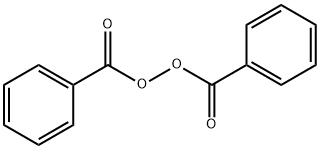Benzoyl peroxide is a strong oxidizing agent that can be used to bleach the organics such as flour, vegetable greases, etc. But it has a strong destructive effect on β-carotene, vitamin A, vitamin E and vitamin B1 in the flour, and the maximum is 0.25~0.3g/kg in the flour. It will easily decompose into free radicals when it is heated to 70~90 ℃, so it is widely used as an initiator of polymerization reaction of olefinic monomer (vinyl chloride, acrylonitrile, etc.) and photochemical reaction. The excessive use of benzoyl peroxide will cause the polymer discolor to yellow, and it also could reduce some pigments. When heated to about 100 ℃, benzoyl peroxide can be quickly decomposed, causing an explosion in the sealed container, so it should be treated as dangerous goods. Benzoyl peroxide is sensitive to impact and friction, and the risk of explosion is high. So we should avoid its contact with metal powder, activated carbon and reducing agent, and comply with the safety of container labels. To prevent the risk of fire, explosion and other danger, when we use it, we usually dilute it to about 20% (diluted benzoyl peroxide) with more than two or three kinds of substances like calcium carbonate, calcium phosphate, calcium sulfate, magnesium carbonate, alum, starch and so on.

